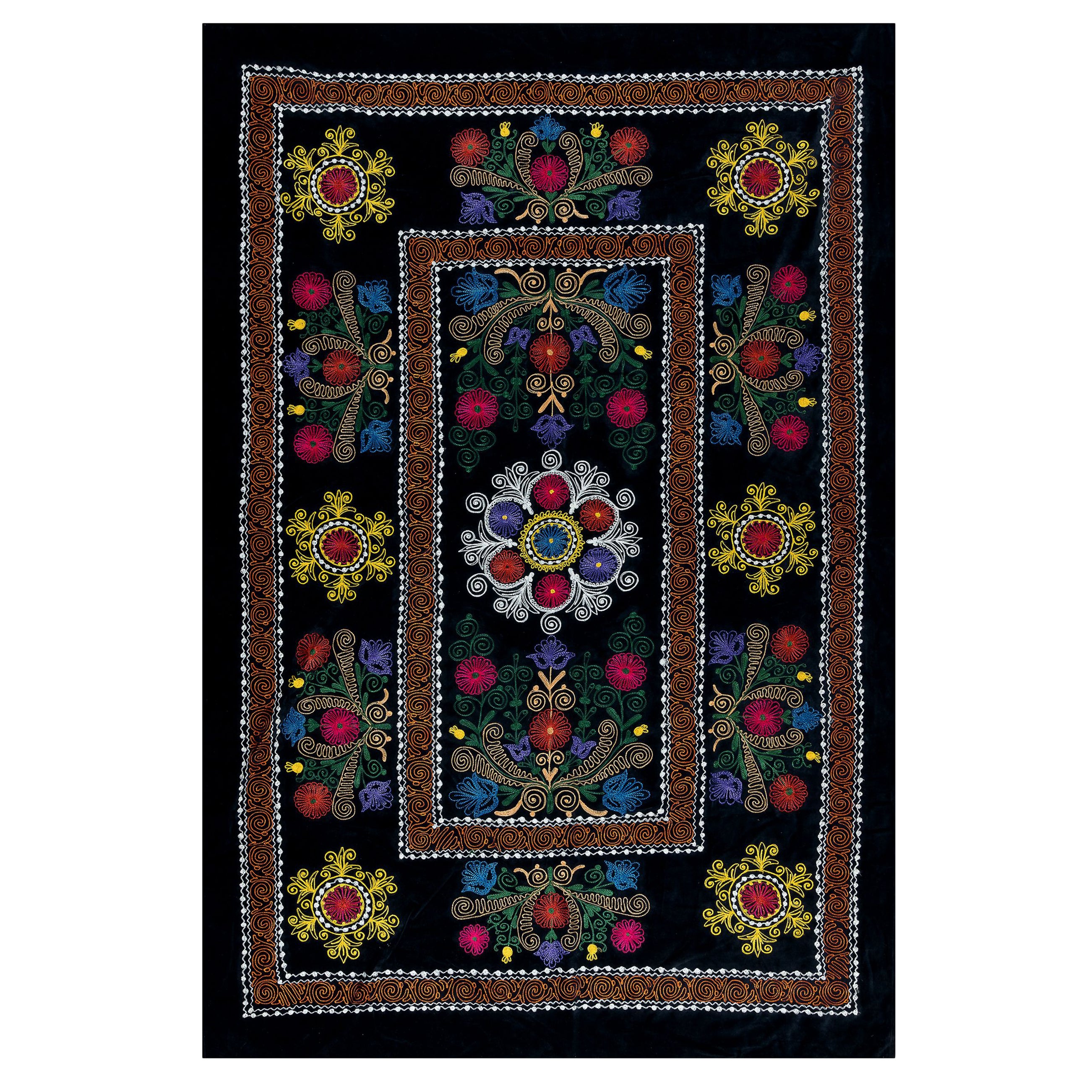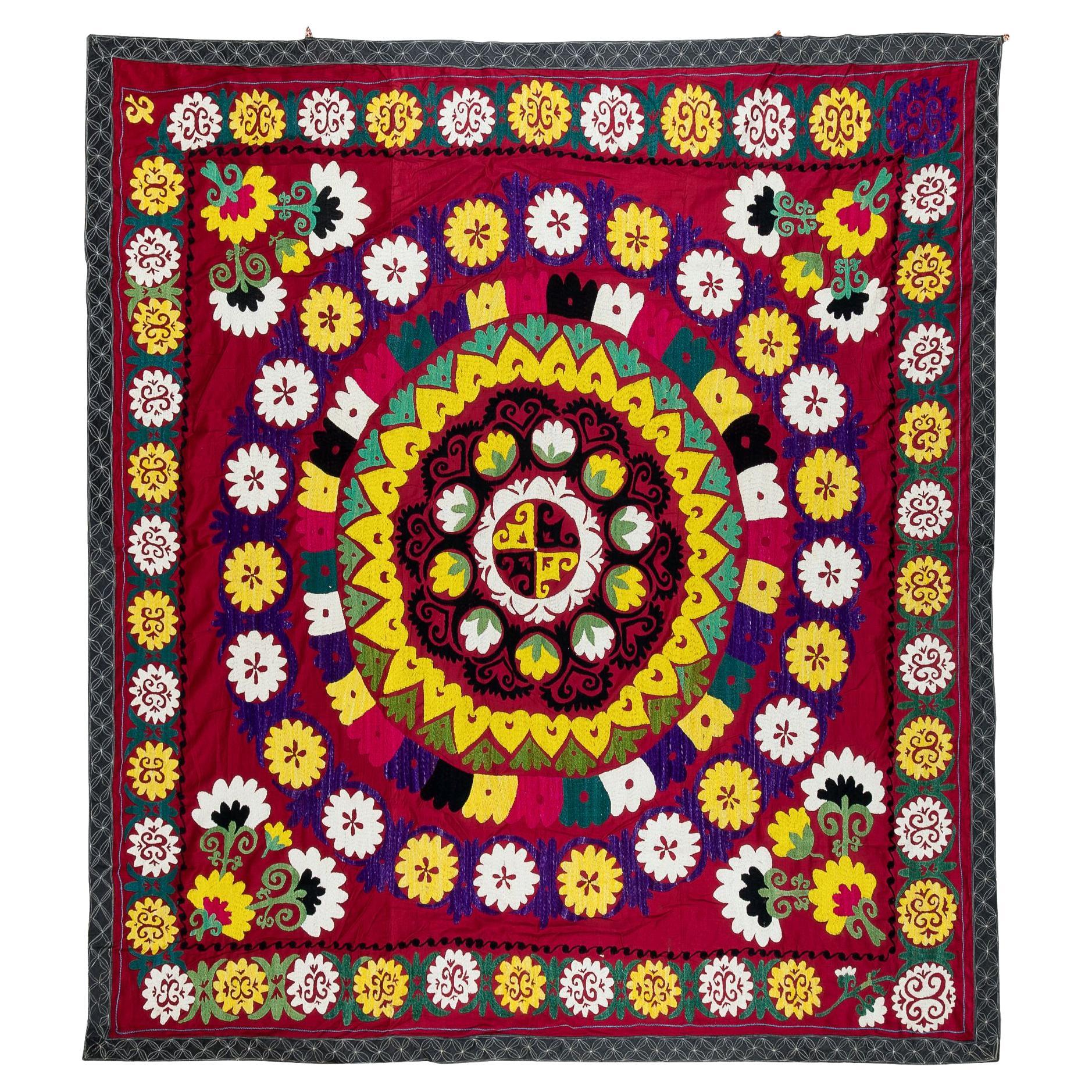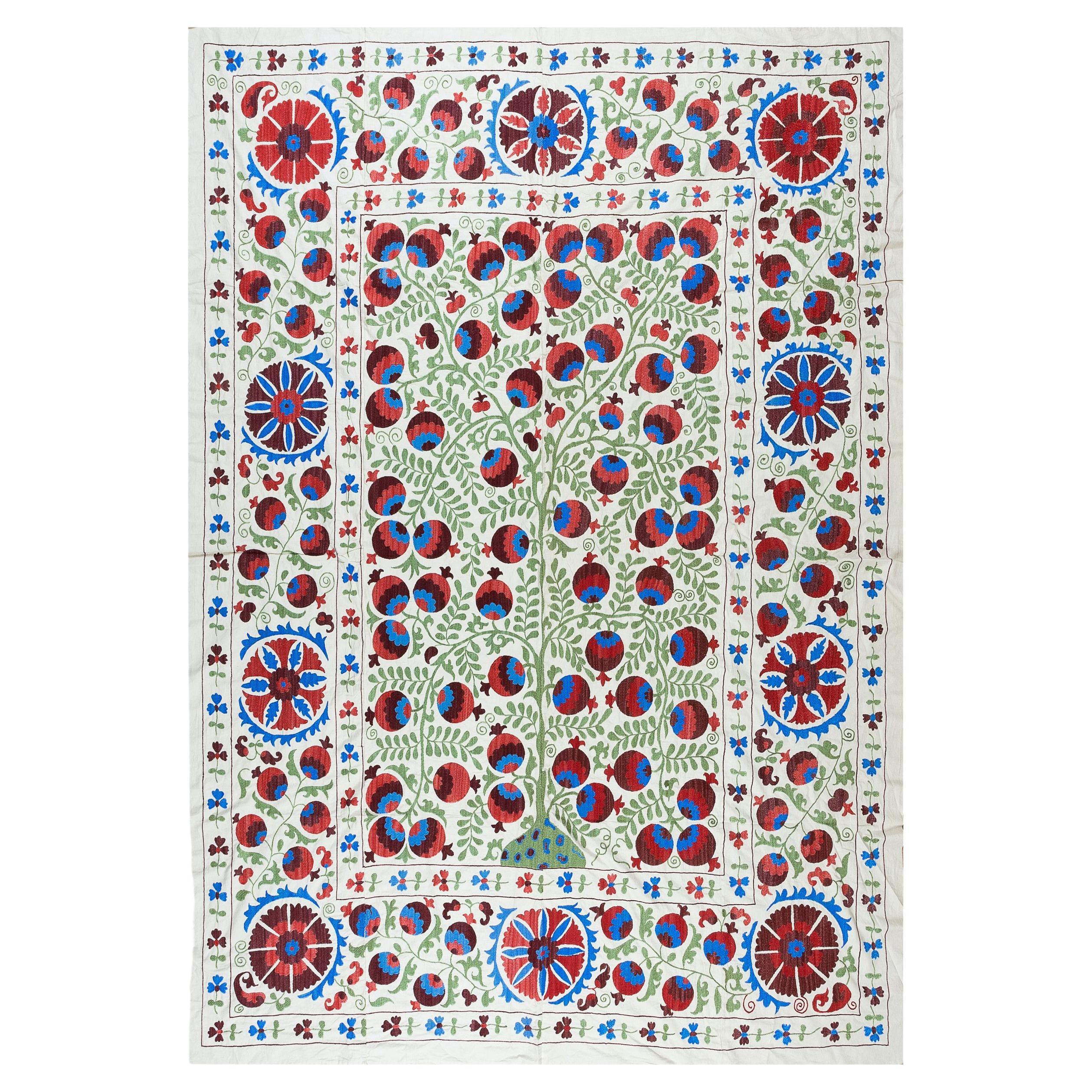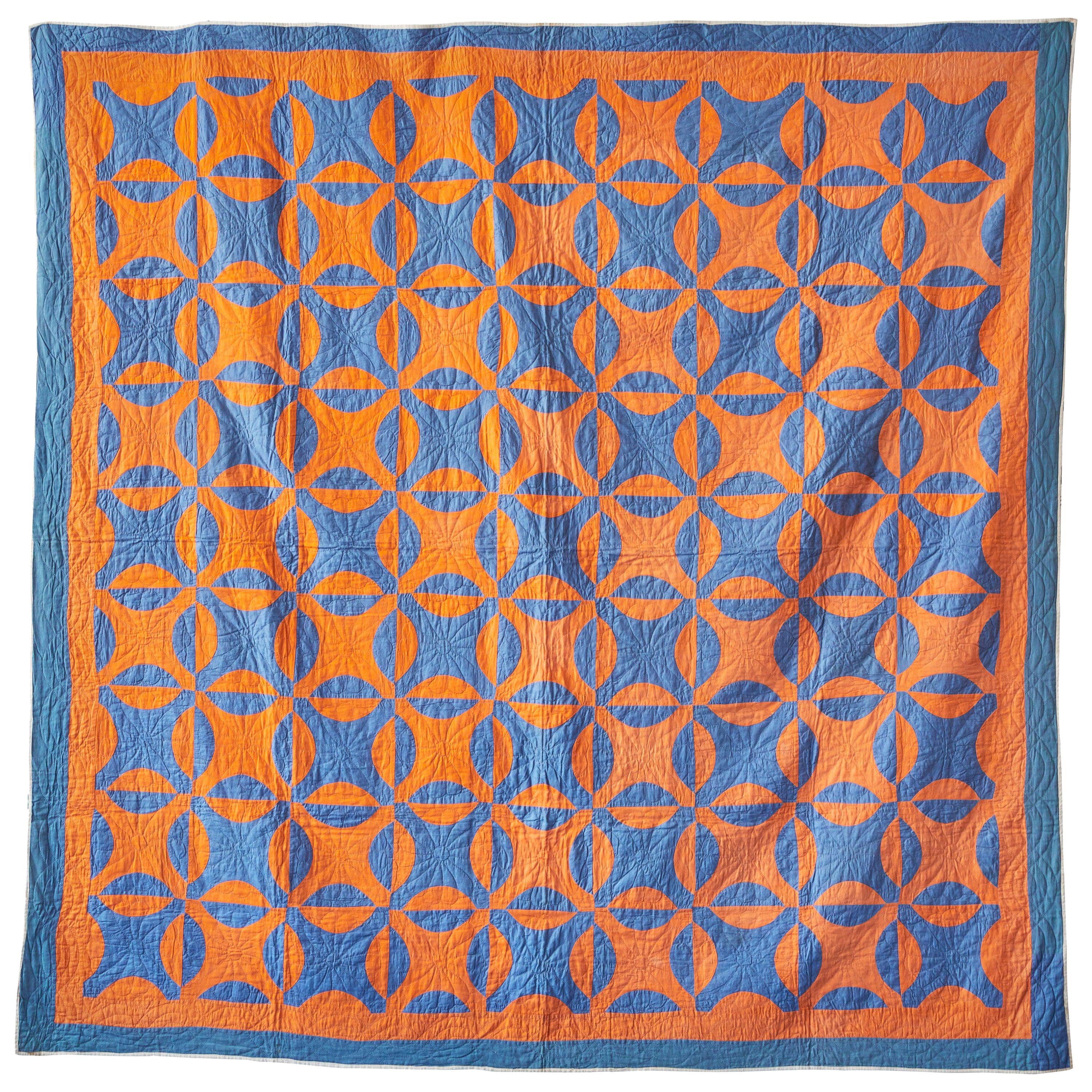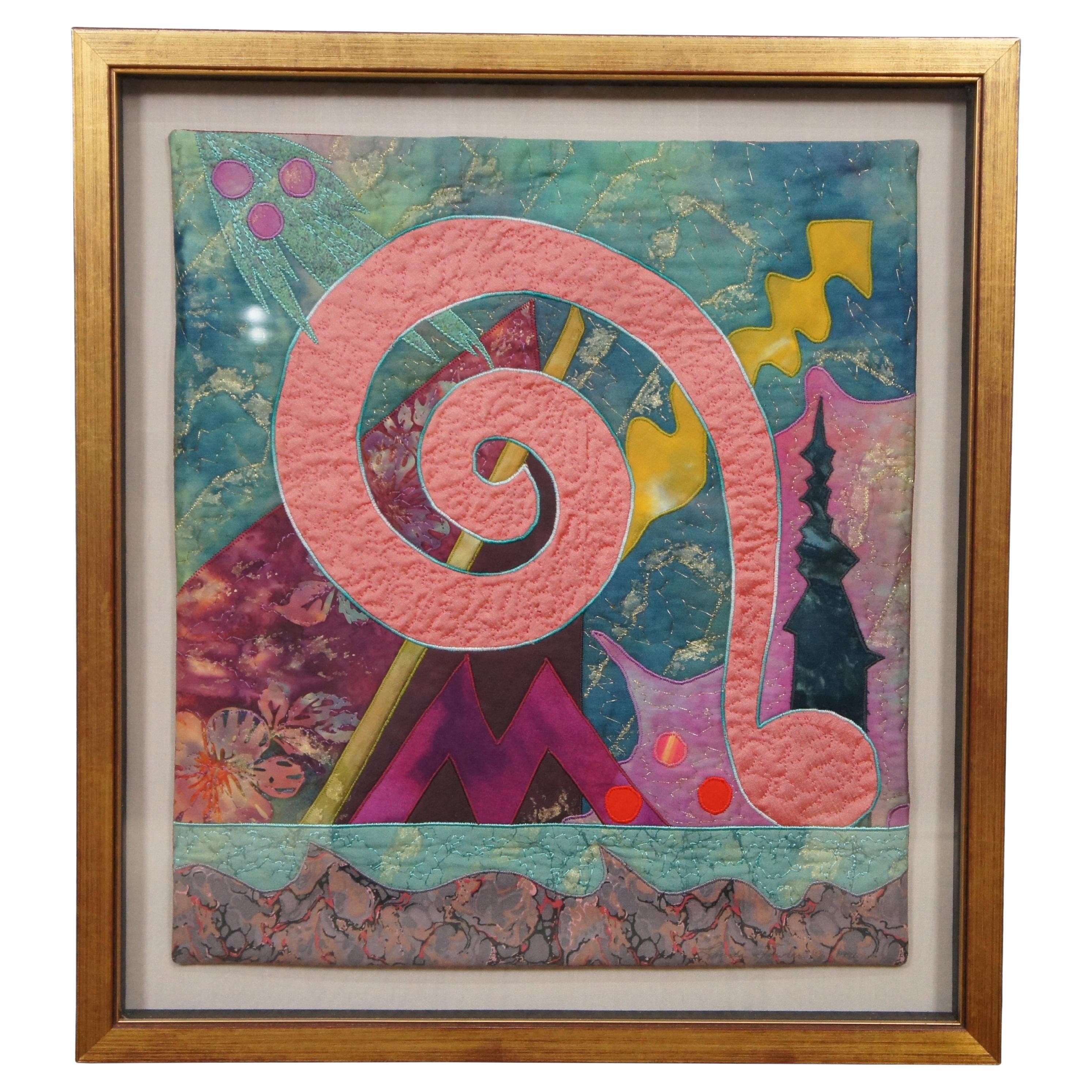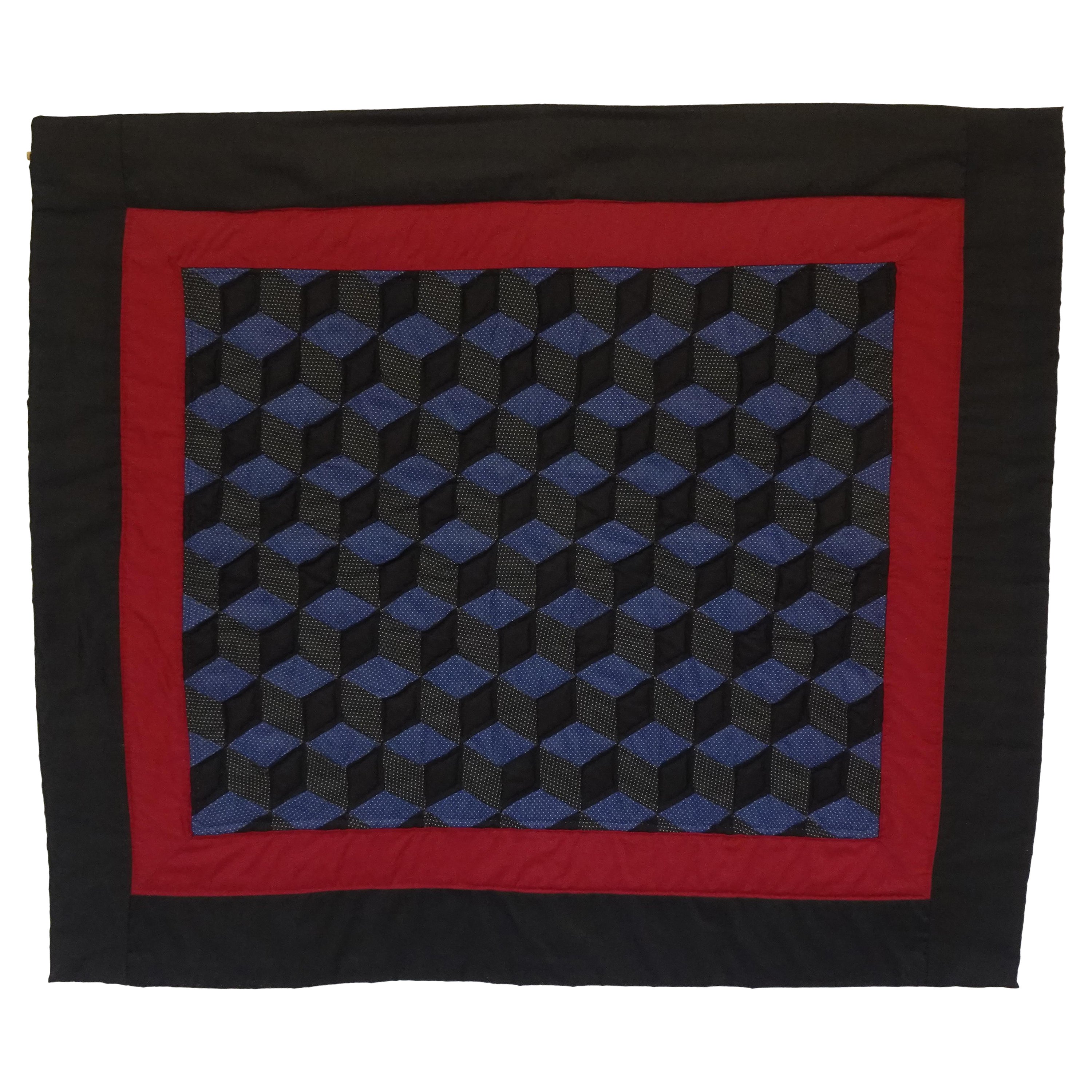Items Similar to Outstanding Cigar Silk Piecework Table Cover
Want more images or videos?
Request additional images or videos from the seller
1 of 6
Outstanding Cigar Silk Piecework Table Cover
About the Item
OUTSTANDING CIGAR SILK PIECEWORKTABLE COVER WITH UNUSUALLY LONG RIBBON FRINGE AND GREAT GRAPHICS, 1880-1910:
Silk bands like these were used to wrap bunches of cigars. Beginning in the Victorian period, women saved them in order that they may be pieced together into decorative pillow tops, table covers, and quilts, usually in some variation of the log cabin quilt pattern. Most examples in all forms are various shades of yellow and cheddar. Sometimes black and white stripes are found along with the yellow, along with light pastel blue, pink, and green and, on occasion, crimson red.
Table cover-sized works are much more rare than their pillow-cover-sized counterparts and are invariably more interesting. Entire quilts are rarer still, but almost never encountered.
The ribbon fringe is very unusual. Each band used in its construction was embellished with a small eyelet at the end, covered in yellow silk crocheted needlework, which acted as a weight to keep the “fringe” in place. The differences in shades of yellow is simply due to hundreds of thousands of cigar-makers buying ribbon from many sources. This is part of what makes the textile more interesting. But the best Folk Art feature is the off-balanced, abstract interpretation of the pineapple log cabin quilt pattern, which is more reminiscent of modern art than that of the late 19th century. Note the centre panel of stacked linear bars, canted at an angle with evident purpose, and the surrounding combination of triangles and trapezoids. This has tremendous folk qualities and when combined with the strong presentation of color and overall design makes for great visual impact. In addition, the piecework was executed with the highest quality of workmanship that is seen in such examples, using tight, turkey-track style decorative stitchery, executed with silk floss.
Across the examples I have owned, this is one of the very best. Some may argue that it is the best. It's the largest with fringe extended and the long ribbon fringe is so unusual. I've never seen fringe this long and usually it would be some manner of silk floss, not ribbon.
In the 19th century there were more than 80,000 cigar makers in the United States alone. It was the "age of the cigar."
Grand Opera was a Sideman, Lockman & Co. cigar made in San Francisco at 212 Battery Street. La Flor de Alfonso was a York, Pennsylvania cigar, made by John K. Pfaltzgraff & Co., founded 1881. I don't know if Alfonso is the same or another brand, but the time period is correct for the Pfaltzgraff brand. Upmann was founded in Havanna, Cuba in the 1840's and moved sometime during the mid-20th century in the face of the long embargo. This is one of the most well-known brands today and you'll find their products at nearly every location that sells quality cigars. There are other obvious Cuban brands among the bands, with Cuban-specific names, but many of the names were not researchable because the words are so generic and there were so many makers. In Connecticut we grew a lot of tobacco used in wrappers (that is, the tobacco leaves used to wrap the outside of the cigars). I don't see any CT names here and I know some of them from having handled many cigar silk piecework textiles.
Mounting: The textile has been hand-stitched to 100% cotton, black in color, which was washed to reduce excess dye. And acid-free agent was added to the wash to further set the dye and the fabric was heat-treated for the same purpose. The mount was then placed in a black-painted, hand-gilded and distressed Italian molding. The glazing is U.V. protective Plexiglas.
Condition: There is almost no breakdown in the bands used in the piecework, which is highly unusual. A few of the segments of ribbon fringe were broken or absent. We removed sections from the corners and used them as replacements. Breaks were stitched down during the mounting process.
- Dimensions:Height: 62.5 in (158.75 cm)Width: 62.5 in (158.75 cm)Depth: 2.5 in (6.35 cm)
- Materials and Techniques:
- Place of Origin:
- Period:
- Date of Manufacture:1880-1910
- Condition:see description.
- Seller Location:York County, PA
- Reference Number:
About the Seller
5.0
Recognized Seller
These prestigious sellers are industry leaders and represent the highest echelon for item quality and design.
Established in 1991
1stDibs seller since 2008
60 sales on 1stDibs
Typical response time: 13 hours
- ShippingRetrieving quote...Ships From: York County, PA
- Return PolicyThis item cannot be returned.
More From This SellerView All
- American Broken Star Pattern Quilt, Lancaster County PennsylvaniaLocated in York County, PABroken Star pattern, patriotic American quilt with 13 stars, Lancaster County, Pennsylvania, circa 1915-1920 Broken Star pattern quilt in red, white, and blue solids with a gingha...Category
Early 20th Century American Quilts
MaterialsCotton
- Winterberry and Flying Geese Pattern Quilt, circa 1860-1870Located in York County, PAWinterberry pattern quilt with flying geese, in patriotic colors and with exceptional graphic impact, entirely hand-pieced and hand-quilted, circa 1860s-1870s Made approximately b...Category
Antique Late 19th Century American Quilts
MaterialsCotton
- Early Horse Blanket in Forest Green and BurgundyLocated in York County, PALoom-woven horse blanket, made circa 1890-1910. The striped and geometric pattern consists of lime green, sunfire red, and ivory, against winter/summer, reversible grounds of forest ...Category
Antique Late 19th Century American Quilts
MaterialsWool
- Princess Feather Quilt Highly Unusual Red and Dark Blue, CA 1870-1885Located in York County, PARed and blue princess feather pattern quilt with interspersed oak leaves and a sawtooth border. Made circa 1870-1885, this stunningly visual textile is highly unusual due to its dark blue ground and red elements. Most all early quilts...Category
Antique Late 19th Century American Quilts
MaterialsCotton
- 34 Stars in an Outstanding Oval Medallion Configuration, Civil War PeriodLocated in York County, PA34 STARS IN AN OUTSTANDING OVAL MEDALLION CONFIGURATION, ON A NARROW CANTON THAT RESTS ON THE 6TH STRIPE, ON A HOMEMADE, ANTIQUE AMERICAN FLAG OF THE CIVIL WAR PERIOD, ENTIRELY HAND-...Category
Antique 1860s American Political and Patriotic Memorabilia
MaterialsCotton
- Outstanding 13 Star Hand-sewn American Private Yacht Flag, ca 1865-1885Located in York County, PAOUTSTANDING, 13 STAR, ANTIQUE AMERICAN PRIVATE YACHT ENSIGN WITH GREAT FOLK QUALITIES THAT INCLUDE AN UNUSUALLY WIDE ANCHOR AND A DECIDEDLY LOPSIDED RING OF 13 STARS; MADE DURING THE 2ND HALF OF THE 19TH CENTURY; ITS DEVICE HAND-SEWN AND SINGLE-APPLIQUÉD Private yacht ensigns were approved American signals for maritime use that allowed pleasure boats to bypass customs. Though the legislation that approved them was adopted prior to 1850, almost all such flags that one will encounter were sewn by electric machine and made during the 20th century. The unusual gems among surviving examples are those that are earlier and include hand-sewn elements. Even more rare are a select few with atypical graphics. Barely any fall into both of these categories at once. Take note of the anchor on this particular flag, wide a long horizontal crossbar (stock) that contributes to uncommonly wide stance. Set within a ring of stars that is decidedly lopsided, the result is as bold as it is endearingly whimsical—two of the best qualities in American folk art, a category in which this particular example can be filed. While I have owned 13 star private yacht flags that have displayed star and canted anchor devices that were somewhat larger and/or bolder than typical, I cannot recall any that were so graphically intriguing as this one. Brief History of Private Yacht Ensigns: The medallion configuration, 13-star, 13-stripe flag, with a canted center anchor was entered into official use in 1848, following an act of Congress, that made it the official signal for U.S. pleasure sailing vessels. The need for such a flag arose with the popularity of boating as a pastime for well-to-do Americans, and as a competitive sport, in addition to its longstanding utilitarian role as a vehicle of trade. In early America, all boats were subject to customs searches at every port. Without modern income tax, the federal government derived its revenues mostly from tariffs, so an accounting of foreign goods on ships was a critical venture. As yachting for pleasure became more prevalent, however, more and more time was spent searching boats that had no such inventory, wasting time for both customs officials and wealthy ship owners. John Cox Stevens, a former president of the Jockey Club and future founder of the Union League Club, became the New York Yacht Club’s Commodore upon its founding in 1845. In 1847 he approached the secretary of the treasury and suggested that something be done to streamline the customs process for non-trade vessels. In 1848, legislation passed Congress requiring registration of these boats, which could then fly the “American Yachting Signal” to bypass customs. This remained on the books until the 1980’s, when the 1848 legislation was revoked, but the use of flags in this design for decorative function continues to this day. 13 star flags have been flown throughout our nation’s history for a variety of purposes. In addition to their use on private yachts, they were hoisted at patriotic events, including Lafayette’s final visit in 1824-25, the celebration of the nation’s centennial in 1876, and the sesquicentennial in 1926. They were displayed during the Civil War, to reference past struggles for American liberty and victory over oppression, and were used by 19th century politicians while campaigning for the same reason. The U.S. Navy used the 13 star count on small boats until 1916, because it was easier to discern fewer stars at a distance on a small flag. Commercial flag-makers mirrored this practice and some private ships flew 13 star flags during the same period as the Navy. Construction: The stars and anchor are made of cotton, hand-sewn, and single-appliquéd. This means that they were applied to one side of the canton, then the blue fabric was cut from behind each star, folded over, and under-hemmed, so that one star could be viewed on both sides of the flag. I always find single-appliquéd stars more interesting, not only because they are evidence of a more difficult level of seam-work and stitching, but also because they are more visually intriguing. The two visible rows of hand-stitching emphasize their hand-sewn construction. For these reasons, single-appliquéd stars often appeal to connoisseurs of early American textiles...Category
Antique Mid-19th Century American Political and Patriotic Memorabilia
MaterialsWool
You May Also Like
- Antique American 1890s "Nine Patch" Patchwork Quilt in Orange and Blue PatternsLocated in Copenhagen K, DKUSA, 1890s Antique blue and orange “Nine Patch” quilt. Measures: H 200 x W 205 cm.Category
Antique 1890s American Folk Art Quilts
MaterialsCotton
- Vintage Linda Fowler Post Modern Abstract Expressionist Textile Quilt Art FramedLocated in Dayton, OH"Vintage original handstitched textile art by Ohio quilt artist Linda Fowler, showing a bold pink spiral over an abstract backdrop resembling a landscape in...Category
Late 20th Century Folk Art Decorative Art
MaterialsTextile
- Master Quilter Nina M. Groves Small Geometric Wall Hanging QuiltBy M.C. EscherLocated in Cincinnati, OHA small wall hanging quilt by master quilter Nina M. Groves known for her famous Quilt barn trail which had designs of them painted on over 1000 bar...Category
20th Century American Modern Quilts
MaterialsFabric
- New Silk Hand Embroidered Suzani Bedspread, Traditional Table CoverLocated in Philadelphia, PASuzani, a Central Asian term for a specific type of needlework, is also the broader name for the hugely popular decorative pieces of textile that feature this needlework in vivid col...Category
21st Century and Contemporary Uzbek Suzani Textiles
MaterialsCotton, Silk
- Silk Embroidery Table Cover, Vintage Central Asian Suzani Wall HangingLocated in Philadelphia, PASuzani, a Central Asian term for a specific type of needlework, is also the broader name for the hugely popular decorative pieces of textile that feature this needlework in vivid col...Category
Late 20th Century Uzbek Suzani Textiles
MaterialsCotton, Silk
- Vintage Hand Embroidery Table Cover, Uzbek Silk & Cotton Wall HangingLocated in Philadelphia, PASuzani, a Central Asian term for a specific type of needlework, is also the broader name for the hugely popular decorative pieces of textile that feature this needlework in vivid col...Category
Late 20th Century Uzbek Suzani Textiles
MaterialsCotton, Silk
Recently Viewed
View AllMore Ways To Browse
Wall Cover
Victorian Silk
Silk White Down
Italian Silk Panel
Italian Silk Panels
Distressed Silk
Table Connecticut
Antique Furniture Ct
Red Silk Wrap
Silk Hand Painted Silk Panels
Mid Century Modern Textile Wall Art
Pink Art Victorian
Antique White Wash Paint
Orange Yellow Stripe
Antique White Silk Paint
Victorian Modern Table
Opera Table
Ct Tables
